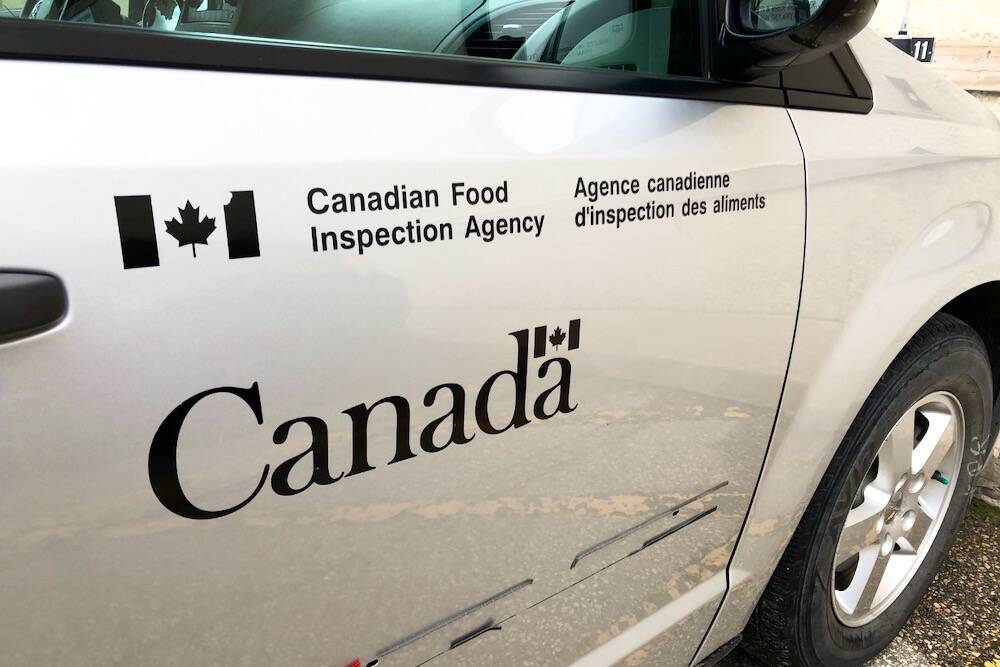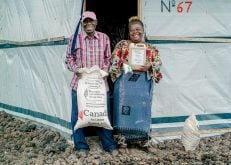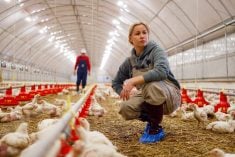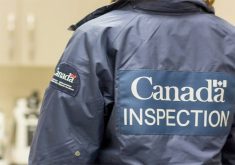Entomologists in North America and Europe are already debating a Canadian field study on honeybees, even though the study hasn’t been published yet.
Last summer Cynthia Scott-Dupree, a University of Guelph, Ont., professor of environmental biology, conducted a $950,000 field scale trial to investigate the relationship between insecticidal seed treatments and bee colony health.
Scott-Dupree, her co-investigator Chris Cutler of Dalhousie University and other scientists are still reviewing the data, but initial results suggest that coating seeds with clothianidin, a Bayer insecticide, doesn’t affect honey production, bee mortality rates or colony weight gain.
Read Also

B.C. ostriches culled, CFIA confirms
Ostriches on an embattled Edgewood, B.C. farm have been culled after a prolonged legal battle, the Canadian Food Inspection Agency has confirmed.
The study, funded by Bayer, won’t be published until later this year or possibly 2014. Yet, entomologists in the U.S., Canada and Europe are paying attention.
“It’s really hard to talk about something that’s not published, so I’m surprised it’s generating as much buzz, for lack of a better word,” said Dennis vanEngelsdorp, a research scientist and bee expert at the University of Maryland.
In 2012, Scott-Dupree and her collaborators placed 40 bee colonies in 10 canola fields around Guelph. Five canola fields had seed treated with clothianidin and five fields did not. U.S. Department of Agriculture personnel are analyzing the pesticide residues for the bees, pollen, nectar, beeswax and honey from the experiment, which was Bayer’s largest bee study in the world last year.
The study is divisive because European countries may soon ban clothianidin, thiamethoxam and imidacloprid, three insecticides known as neonicotinoids. The products are applied as a seed treatment to corn, soybeans, canola and sunflowers on millions of acres globally.
Last year a French study indicated that bees exposed to thiamethoxam, a Syngenta product sold as Cruiser, are more likely to die while foraging because the bees couldn’t find their way back to the hives. In addition, a Scottish study demonstrated that colonies exposed to imidacloprid, a Bayer insecticide, produced 85 percent fewer queens than a control group.
In response to those papers and a European Food Safety Authority report on neonicotinoids, the EU Commission recommended that member states prohibit the use of the three insecticides for seed treatments and crop application for two years beginning this spring.
The proposed ban is controversial because many experts say it’s based on laboratory scale studies that aren’t transferable to real world conditions.
“What makes bees so problematic, is that they are social insects. That means that these small, laboratory experiments can show affects on individual bees or small groups of bees,” vanEngelsdorp said. “(But) a bee colony has a lot redundancy…. You can kill a lot of bees in that colony and that colony still survives…. That’s why it’s so hard to get rid of termites and ants, because (the group) is so resilient…. So, I think you can document effects on honeybees in the lab that don’t translate into the field.”
Scott-Dupree said one the primary weaknesses of lab studies is dosage. Before imposing a ban European scientists should follow up their lab studies with field research because field level exposure to insecticides is significantly less than lab dosage.
Other scientists, including James Frazier, a Penn State professor of entomology, say field scale studies on bees are unreliable.
“One of the major problems with field studies and it certainly is a major problem with the field studies that Cynthia has done, is they set up a five acre plot of treated plants… when the honeybee colony is foraging over 14,000 acres,” he said. “Under field conditions you have limited control over external variables. So there’s always a huge question about whether the impact you measured is due to the chemical itself or some other variable…. So, saying they’ve not seen an impact due to (the neonicotinoids) is highly questionable, if not totally irrelevant.”
In most field studies the dose isn’t known, Frazier added. Therefore, it’s difficult to assess the impact of an insecticide if you don’t understand dosage.
“You don’t have one controlled dose that the colonies have been exposed to. So you don’t have a study.”
According to vanEngelsdorp, lab and field studies on bees are both useful. Lab research can identify and help scientists understand individual factors that affect bee health.
Testing that factor out in the field is complex, which means field data isn’t perfect.
“Yes, that means the data is dirty and that means you have to have a lot of replicates and it means there is some real challenges to these (field) studies…. but there is a growing ability to do that.”
Frazier and vanEngelsdorp both said it’s unlikely the U.S. or Canada would ban neonics because environmental policies in North America are based on proof of harm. Europeans, in contrast, rely on the precautionary principle – where a suspect chemical is guilty until proven innocent.
Marion Ellis, a University of Nebraska entomology professor, said it might be prudent to ban neonicotinoid treated seed on crops that are highly attractive to bees, such as canola and sunflowers, because of the high risk of exposure.
If neonics were banned, though, growers would likely spray their crops with older, more toxic insecticides, he noted.
“The results of a ban would be to revert to previously used strategies that are clearly injurious to bees. Clearly, it is not a simple problem with a simple solution.”
EU member states are scheduled to vote on the proposed ban March 14.















